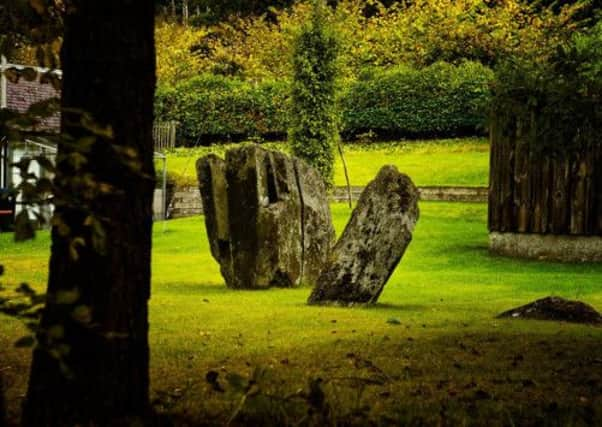100 Weeks of Scotland: The ‘middle’ of Scotland


I discovered four specific places that seemed to have a reasonable claim to the honour (sorry Harthill Service Station, but you really aren’t the ‘Heart of Scotland’) and even these are probably not the true centre point as the Ordnance Survey make the point that as coastal erosion and coastal shift are constant, the midpoint would constantly be changing.
Unlike the North, South, East and West points of Scotland the locations of the possible centre point make no real claim to be so, with the exception of a spot near Newtonmore that has a small cross carved into a dry stane dyke.
Advertisement
Hide AdOf the four locations I visited, the one that the Ordnance Survey say is the centre of mainland Scotland is a hillside in Glengoulandie, a few miles east of Schiehallion. This was measured by the centre of gravity method – in other words if you cut out a map of Scotland and placed it on a pin until it was perfectly balanced, that would be the centre point. Of course this becomes even more complicated when Scotland’s numerous islands are included.
In planning shoots Google Street View can often be a great place to start your research and I knew beforehand what to expect at Glengoulandie, which lovely though the area is, isn’t the most photographically striking. As I approached the spot I couldn’t believe my luck that some unknown hand had placed a blue arrow road sign pointing fairly much dead on to the spot on the hillside that marked the centre point. Thank you, whoever you are, you helped make my photo a lot more interesting.
Next claimant is a spot a few miles south of Newtonmore and the only one to boast any form of marker at the spot. On a lonely B road, if you are VERY observant, you will find a small cross carved into a stone wall. Local legend has it this is the true heart of Scotland. It seems once there was a plaque stating this fact but this is now gone, a victim of a jealous plot I would like to think (Have you an alibi Glengoulandie?).
The third contender is a remote spot somewhere along the railway line between Blair Atholl & Dalwhinnie. Again this is based on the centre of gravity method but this time including all the islands. It is here that in 2002 the Ordnance Survey last declared the centre to be, and it is here that probably the true midpoint is closest to.
Finally, a rather more spurious contender, but probably my favourite of the four and the one that I would love it to be most. The megalithic Faskally Cottages Standing Stones are a circle of seven stones set with great domesticity in the back garden of a private house. According to a 1908 excavation report by the Society of Antiquities the exact centre of Scotland was placed here, in this circle of stones, in this well-kept garden. Is it true? Probably not. Should it be true? Definitely yes.
So there we have all the claimants to the honour of being the perfect centre. What I enjoyed most about all four places was the almost complete lack of markers or ceremony. No one has tried to make money out of this point. There are no visitor centres, cafes or monuments - just a theoretical point on a map that wanders, unfettered and unmarked, through time and space.
Advertisement
Hide Ad• Alan McCredie began the ‘100 weeks of Scotland’ website in October last year, and it will conclude in Autumn 2014. McCredie’s goal is to chronicle two years of Scottish life in the run-up to the independence referendum.
McCredie says ‘one hundred weeks...’ is intended to show all sides of the country over the next two years. On the site, he says: “Whatever the result of the vote Scotland will be a different country afterward. These images will show a snapshot of the country in the run up to the referendum.
Advertisement
Hide Ad“The photos will be of all aspects of Scottish culture - politics, art, social issues, sport and anything else that catches the eye.”
Follow the project at 100weeksofscotland.com. You can also follow Alan on Twitter.
All pictures (c) Alan McCredie/ 100 weeks of Scotland